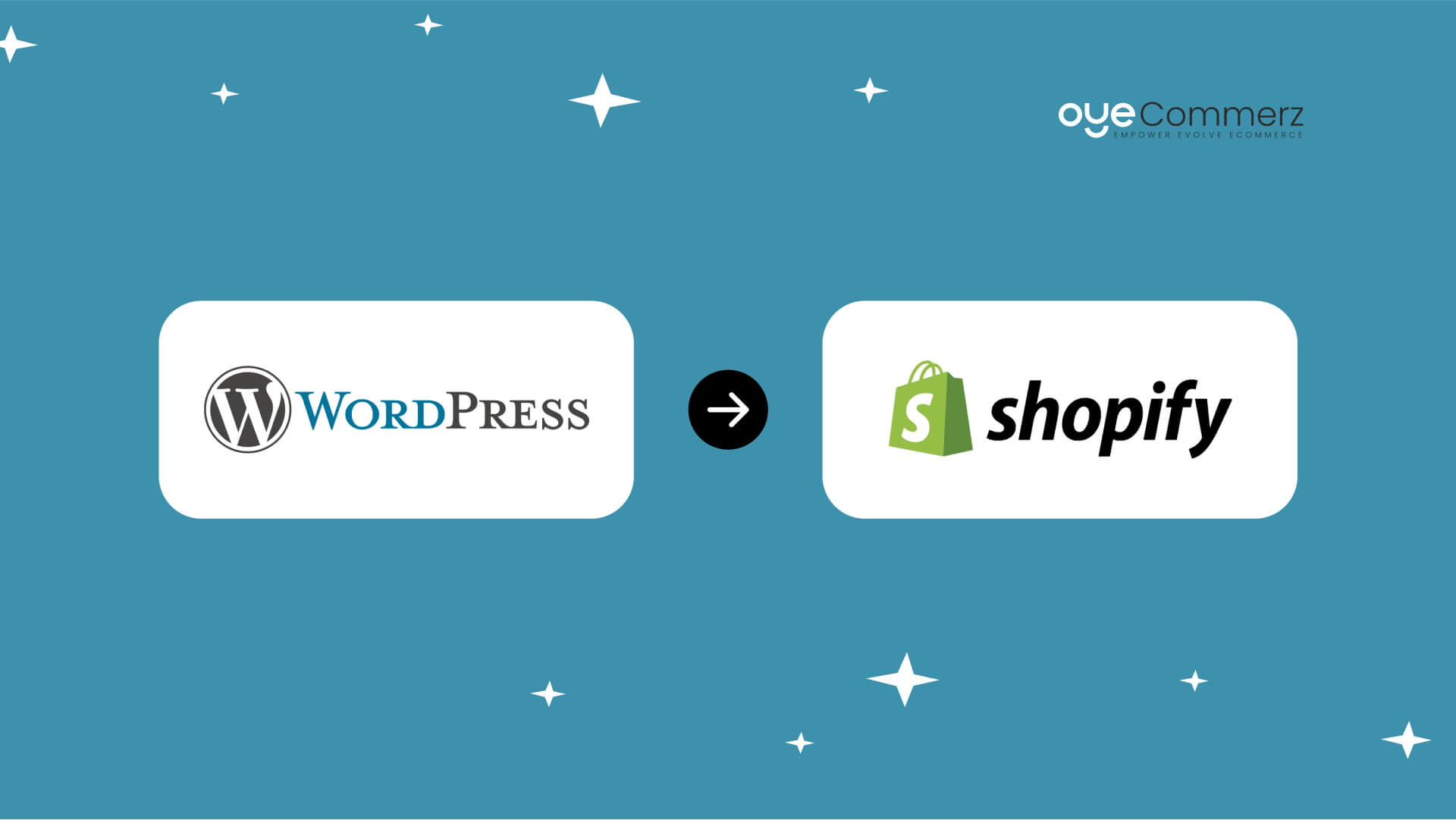Transitioning from WordPress to Shopify marks an exciting step in streamlining your e-commerce processes. As businesses expand, choosing a solution that aligns with scalability, UX, and customization becomes crucial. Shopify is widely recognized as a favorite for e-commerce professionals, offering superior flexibility, data protection, and ease of use. In this guide, we’ll explore the transformative impact of this migration, highlight the advantages, and share practical tips to ensure a seamless transition.
1. Top Reasons to Transition from WP to Shopify
WordPress, paired with WooCommerce, has served countless online stores. Nevertheless, as businesses expand, challenges like plugin dependency, data risks, and complex setups often obstruct progress. Shopify, designed explicitly for e-commerce, addresses these issues with an all-in-one, intuitive platform. Real data supports this transition—Shopify powers over 4.4 million websites worldwide, with a documented 10% increase in sales performance for numerous merchants after migration.
2. Shopify's Perks for Thriving Online Stores
Shopify’s powerful platform is tailored for scaling businesses. Its notable benefits are:
- Seamless Customization: Shopify provides over 80 professionally designed themes.
- Built-in Features: Features like Shopify Payments and integrated SEO save time and effort.
- International Expansion: Currency versatility and localization features empower businesses to expand internationally.
Additionally, Shopify delivers an uptime rate of 99.98%, ensuring your store is always operational.
3. Preparing for WordPress to Shopify Migration
Before migrating, assess your existing setup. Analyze product data, client information, and SEO performance. Tools like Shopify’s Migration Kit or external tools can simplify this process. Develop a detailed strategy, making sure all assets—product descriptions, images, and blog content—are ready for seamless import.
4. The Importance of Accurate Data Migration
Transferring your data forms the foundation for a successful platform switch. When migrating from WordPress to Shopify, prioritize:
- Product Information: SKU, item summaries, and groupings.
- Client Information: Emails, purchase records, and custom fields.
- SEO Optimization: Preserve meta tags, URLs, and redirects to avoid SEO losses.
Use tools such as LitExtension to streamline data transfer while minimizing errors.
5. Customizing Your Shopify Store
Post-migration, personalizing your Shopify store helps it reflects your business identity. Take advantage of Shopify’s drag-and-drop editor to design pages effortlessly. Shopify's templates are mobile-responsive, ensuring a seamless user experience Shopify migration process across platforms—a key point, given 74% of online shopping is generated by mobile visitors.
6. Maintaining SEO During Migration
SEO is vital for maintaining your online presence during migration. Shopify is highly optimized for search engines with organized link formatting, built-in optimization tools, and smooth content management. Ensure:
- Implement 301 redirects for old URLs.
- Enhance updated content with keyword-rich content.
- Leverage plugins like Plug in SEO to monitor performance after the switch.
7. Essential Tests After Migrating to Shopify
Once the migration is complete, run detailed checks.
Check: - Website speed (Shopify delivers faster speeds compared to WP).
- Functionality of payment gateways and transaction flow.
- Mobile responsiveness.
Quality assurance ensures your store delivers a seamless shopping journey from day one.
8. Real-Life Success Story
One such migration success story is Gymshark, a fitness apparel brand that transitioned to Shopify. After the switch, the company experienced a 60% increase in mobile sales and reduced site downtime. This showcases the potential of Shopify in driving e-commerce growth.
9. Challenges and Solutions
Migration comes with challenges, such as information accuracy and adjusting tailored features. However, Shopify’s extensive assistance and third-party experts make overcoming these hurdles manageable. Partnering with experienced Shopify developers ensures a trouble-free transition.
10. Making the Switch: The First Step Toward Success
Switching from WP to Shopify represents a strategic decision to e-commerce. By addressing scalability, simplifying management, and enhancing the customer experience, Shopify enables companies to succeed in challenging industries.
Conclusion
Transitioning from WP to Shopify offers a smart solution that can greatly enhance your e-commerce success. With a well-structured strategy, the right tools, and expert support, you can achieve new growth opportunities.
Ready to make the leap? Let’s discuss how our Shopify Shopify migration services migration services can revolutionize your online store. Contact us now, or ask yourself: Is it time to seize Shopify’s advantages for your store?
